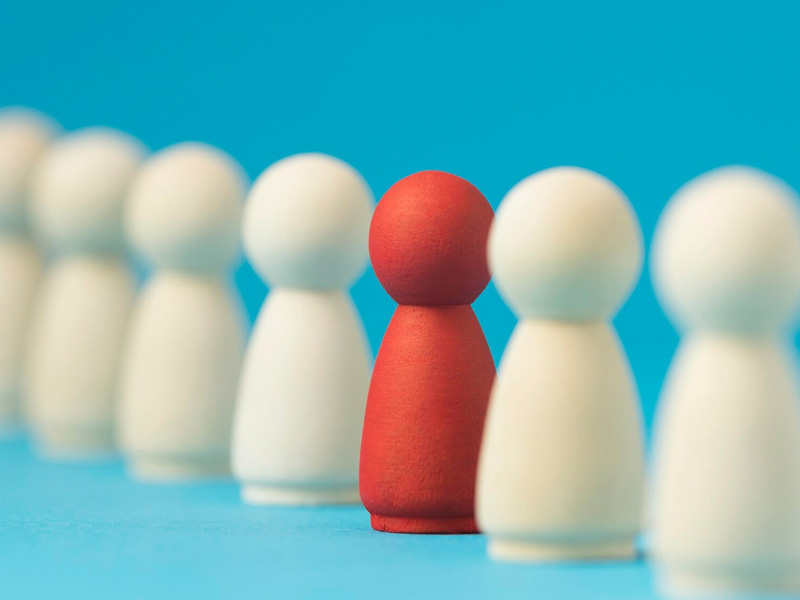
Significance Of Non-Verbal Communication InInterviews
Experts estimatethat 55% of message interpretation during interactions relies on non-verbalsignals, while only 7% depends on verbal content. Facial expressions, gestures,posture, eye contact, and other visual cues subconsciously influence whetherinterviewers feel you are interested, engaged, and socially apt for the role.It is thus critical to present a firm yet relaxed non-verbal presence.Non-verbalcommunication holds immense significance in interviews. While words conveyinformation, non-verbal cues reveal emotions and character. From the initialhandshake, eye contact, and facial expressions to posture, gestures, and activelistening, your non-verbal signals can make or break an interview. They speakvolumes about your confidence, authenticity, and interest in the position.Understanding and utilizing effective non-verbal communication can influencethe interviewer's perception, build rapport, and ultimately, significantlyimpact the interview's outcome. Mastering these signals is essential for asuccessful interview.
Strategies To Crack An Interview With Non-Verbal Positive Signals
Besides preparation, projecting the right body language plays animportant role in making a great impression in a job interview. This sectionfocuses on some effective non-verbal communication strategies like smiling,posture, eye contact, gestures and more that can help you convey positive vibesto the interviewer. Some of the best strategies to do so are-
Pre-Interview Preparation
Remembering calmingbreathing exercises and positive affirmations help you feel collected rightbefore stepping in. Arrive early to relax and review your research/answers.Dress professionally and make eye contact while shaking hands with confidenceupon greeting the panel. Practicing mock interviews with a friend improvesnon-verbal cues.This blog delves into practical pointers for leveraging bodylanguage to your advantage in interviews. It discusses essential pre-interviewpreparation, effective greeting techniques, maintaining eye contact, facialexpressions, posture, and listening skills to showcase enthusiasm and controlover nervousness. Learning cultural sensitivity and building rapport throughmirroring are also covered.
Confidence building exercises
These simple techniques like power poses, smilingmore often, and celebrating wins boost self-assurance on days leading up tointerviews. Write down strengths/achievements to reflect on if nerves kick inat any point during interactions. Deep breaths, stretching, and stayinghydrated keep composure intact under pressure as well. Confidence-buildingexercises are activities designed to enhance self-assurance and self-esteem.They can range from public speaking practice to setting and achieving smallgoals. These exercises help individuals conquer self-doubt, fear, and anxiety,fostering a stronger sense of self-worth. By gradually pushing one's comfortzone and celebrating incremental successes, confidence-building exercisesempower individuals to tackle challenges, take risks, and achieve personal andprofessional growth.
Greetings and Initial Impressions
Smile warmly, makesolid yet gentle eye contact, and greet interviewers respectfully by name withan enthusiastic handshake. A friendly yet dignified demeanor sets the tone thatyou are interested, likable, and excited for discussions. Assess cultural normsto avoid potentially inappropriate gestures.Greetings and initial impressionsare the gateway to a successful interview. A firm handshake communicatesconfidence and enthusiasm. Sustained eye contact conveys attentiveness andengagement. Positive facial expressions, such as a warm smile, set a welcomingtone. These non-verbal signals create a favorable first impression, signalingyour readiness and interest in the conversation, which can significantlyinfluence the course of the interview.
Maintaining eye contact
Look interviewers inthe eyes periodically when responding thoughtfully to questions or listeningactively. However, maintain a natural flow, avoiding excessive staring to comeacross as sincere rather than distrustful or over-confident. Glance awaymindfully between transitions for the 'right' non-verbal impact.Maintaining eyecontact is a powerful non-verbal signal in interviews. It signifies confidence,sincerity, and active engagement. Consistent eye contact shows you areattentive and interested in the conversation, building trust with theinterviewer. However, be mindful not to overdo it, as it can beconfrontational. Striking the right balance in maintaining eye contact iscritical to making a positive impression.
Positive facial expressions
Smiling, engagedeyebrows, and head nodding demonstrate investment and comprehension throughout.Frowning, lip biting, or tense features may signal disinterest or uncertaintyeven if your words say otherwise. Relax facial muscles to achieve an appealingyet serious look as needed.Positive facial expressions are pivotal in conveyingyour emotions and attitude during interviews. A genuine smile, for instance,exudes warmth and approachability, setting a welcoming tone. Expressinginterest and enthusiasm through facial expressions can build rapport andestablish a positive connection with the interviewer. Remember, your face is apowerful tool for conveying your readiness and suitability for the role.
Postureand Gestures
Sit tall withshoulders back and legs uncrossed to portray a composed yet welcoming presence.Limit jittery movements by keeping hands visible and still on laps except whenpunctuating important points naturally. Mirroring interviewers' relaxedpostures where applicable ease interactions.Your posture and gesturescommunicate confidence and professionalism in interviews. Maintain an uprightposture to convey attentiveness and self-assuredness. Using open and welcominggestures, like open palms and non-threatening movements, creates an invitingatmosphere. Avoid nervous habits, such as tapping or fidgeting, as they candetract from your message. Effective use of body language in tandem with apoised posture bolsters your overall interview performance.
Sitting and standing confidently
Maintain goodposture, whether seated or while walking in/out of conference rooms. Standpolitely when greeting or at transitions without slouching. Avoid fidgeting asit undermines presence. Leaving a comfortable space maintains professionalismwithout coming across as standoffish.Sitting and standing confidently arepivotal non-verbal cues in interviews. When seated, maintain an upright postureto exhibit attentiveness and self-assuredness. In a standing position, standtall to project confidence. Your stance and posture speak volumes about yourprofessionalism and readiness for the role, making it crucial to ensure youconvey assurance and capability through your sitting and standing positions.
Active Listening
Face the discussionby angling your entire body towards the speakers. Lean slightly forward and nodthoughtfully to indicate focus as interviewers talk. Jotting down key pointsaffirms attention and buy-time before responding precisely to complexquestions.Active listening is an invaluable non-verbal communication skillduring interviews. Nodding in agreement, mirroring the interviewer's cues, andmaintaining focused eye contact show genuine interest and engagement. Employnon-verbal cues, like head shakes or appropriate facial expressions, to signalunderstanding and encourage the conversation. Active listening fosters apositive atmosphere and highlights your capacity to comprehend and respondeffectively to the interviewer's points.
Demonstrating genuine interest
Express interest viafacial expressions and enthusiastic yet measured tones when engaging withpanelists. Ask thoughtful questions regarding the company, role specifics, andtheir perspectives to showcase curiosity about the position and organizationculture. Demonstrating genuine interest involves active listening, empathy, andcuriosity. It's about engaging in meaningful conversations, asking thoughtfulquestions, and showing a sincere desire to understand and connect with others.Whether in personal relationships or professional interactions, displayinggenuine interest fosters trust and strengthens bonds. It communicates that youvalue the person and their thoughts, fostering deeper connections and morerewarding interactions
Non-Verbal Confidence
Sit up straight withhands relaxed and breathe deeply before responding. Maintain eye contact, smilenaturally, and speak clearly at a moderate pace regardless of the questiontopic or nerves felt. This poise and control earns the interviewer's confidencein your abilities under pressure. Non-verbal confidence is expressed throughbody language and demeanor. It encompasses maintaining eye contact, standing orsitting with poise, and using gestures that convey self-assuredness. Aconfident person's non-verbal cues are often relaxed and open, reflecting innerassurance. This non-verbal confidence can significantly impact how othersperceive and respond to you, influencing interpersonal dynamics, credibility,and success in various aspects of life.
Conclusion
Incorporating conscious non-verbal communication enhancesself-presentation multi-fold. With adequate preparation and awareness, you canleverage body language to your maximum advantage and convey enthusiasm,interest, and poise to help tip the scales in your favor on interview day.Inconclusion, mastering non-verbal positive signals is a game-changer for acinginterviews. From a confident handshake to attentive listening and friendlyfacial expressions, these cues convey your professionalism, authenticity, and interest.Non-verbal communication can significantly influence interview outcomes, soharnessing this powerful tool is essential. By practicing and perfecting thesenon-verbal pointers, you'll make a memorable first impression and pave the wayfor interview success.

_Expert.png)
